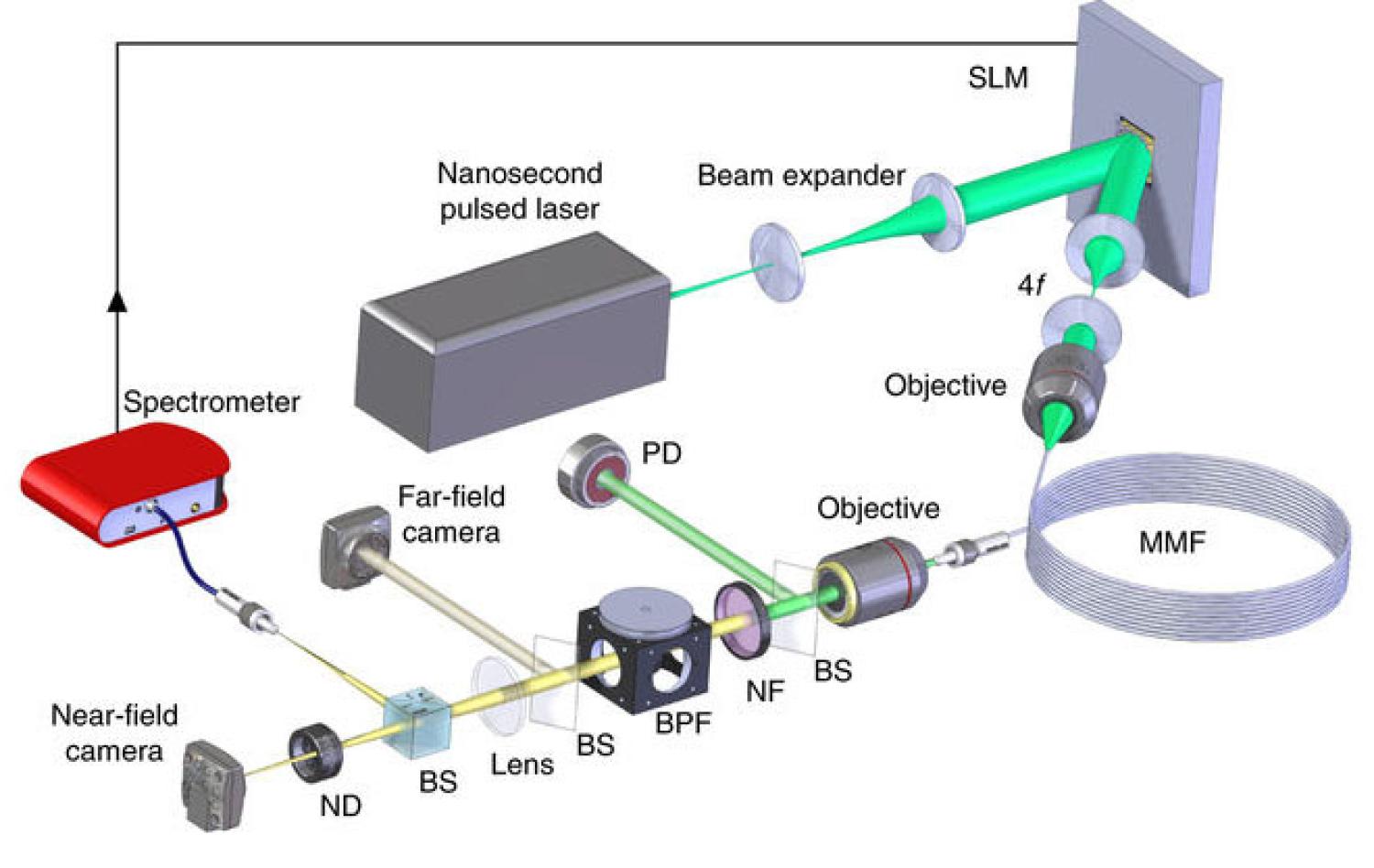New approach could enable new lasers, faster fiber optic communications and imaging

A new light control system created at CU Boulder could increase the capacity for fiber optic technologies, enable thinner medical endoscopes and allow for stronger industrial lasers.
Many current fiber optic technologies use single-mode fibers, which work better than multi-mode fibers over long distances. However, because they can only carry one mode of light, single-mode fibers are reaching their performance limit.
The new optical system designed by a team in the Department of Electrical, Computer and Energy Engineering would allow for better control of multi-mode fibers, allowing the fibers to efficiently carry several “channels” of information over longer distances with less distortions by finding the optimal combination of modes that are injected into the fiber.
The system implements a type of machine learning in the modulators that control light waves as they enter the fiber. The machine learning decides in real time whether to enhance or supress interactions that produce different colors of light as it travels through the fiber.
The machine learning optimization used in the system is especially novel, according to Rafael Piestun, study co-author and professor of electrical engineering, because it corrects unpredictable disruptions very quickly.
“If you were trying to solve these optimization problems offline, it could take centuries of computational modeling because there are many variables and complicated numerical equations,” he said. “The machine learning flexible control is important when dealing with dynamic systems such as optical nonlinearities in fibers. One possible application of our adaptive approach could be to reduce nonlinear noise in fibers, which currently limits the data capacity in fiber-based communication systems.”
The study, published in Nature Photonics, was also co-authored by postdoctoral researchers Omer Tzang and Antonio Caravaca-Aguierre, and Professor Kelvin Wagner.

